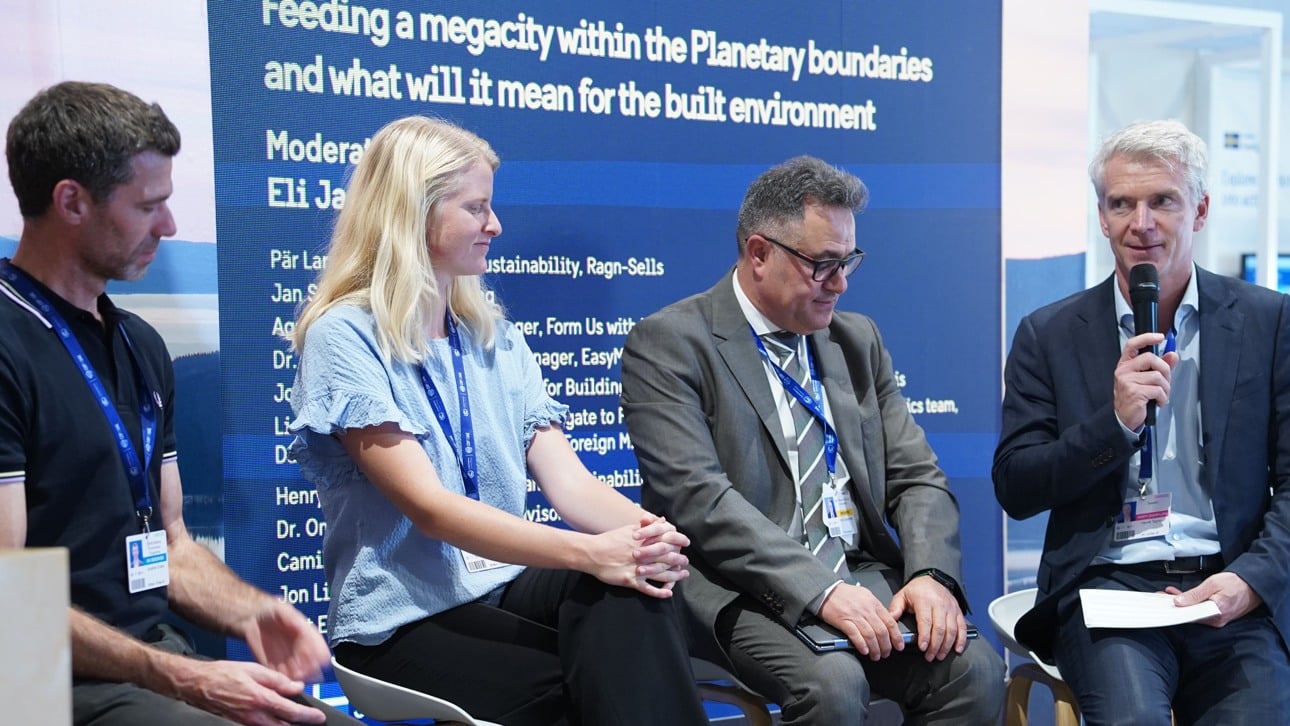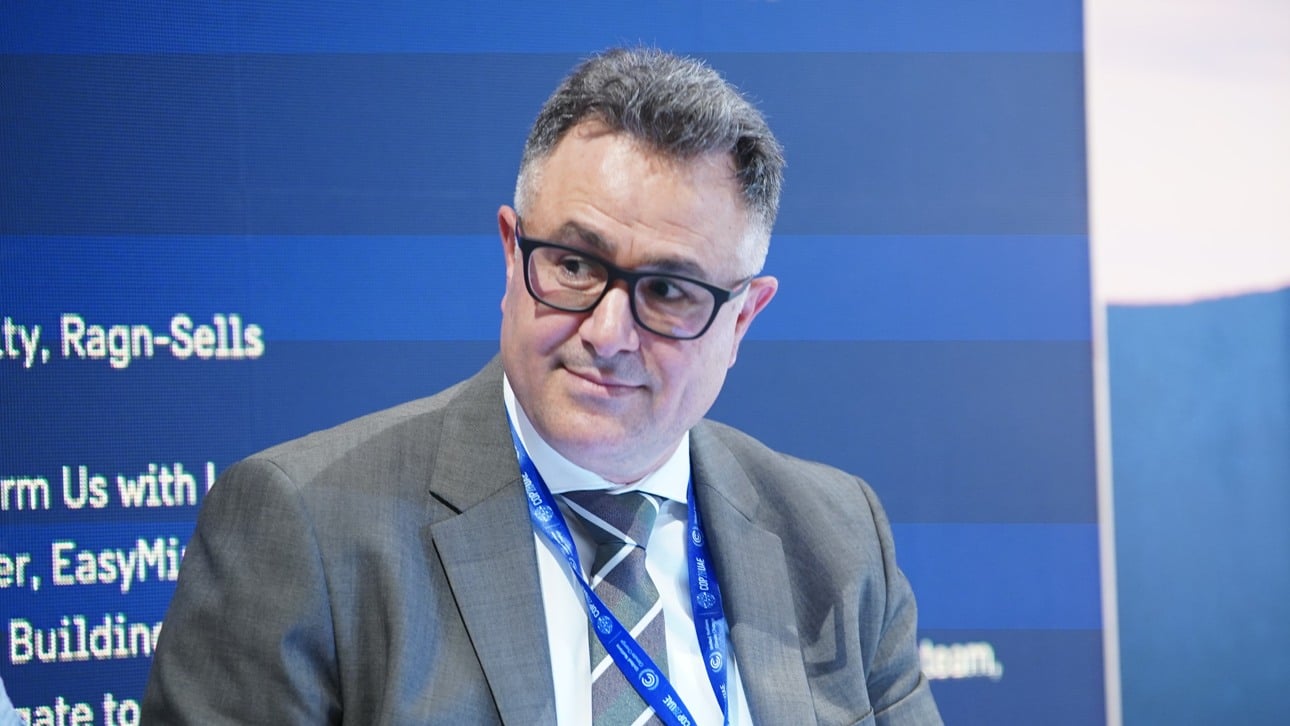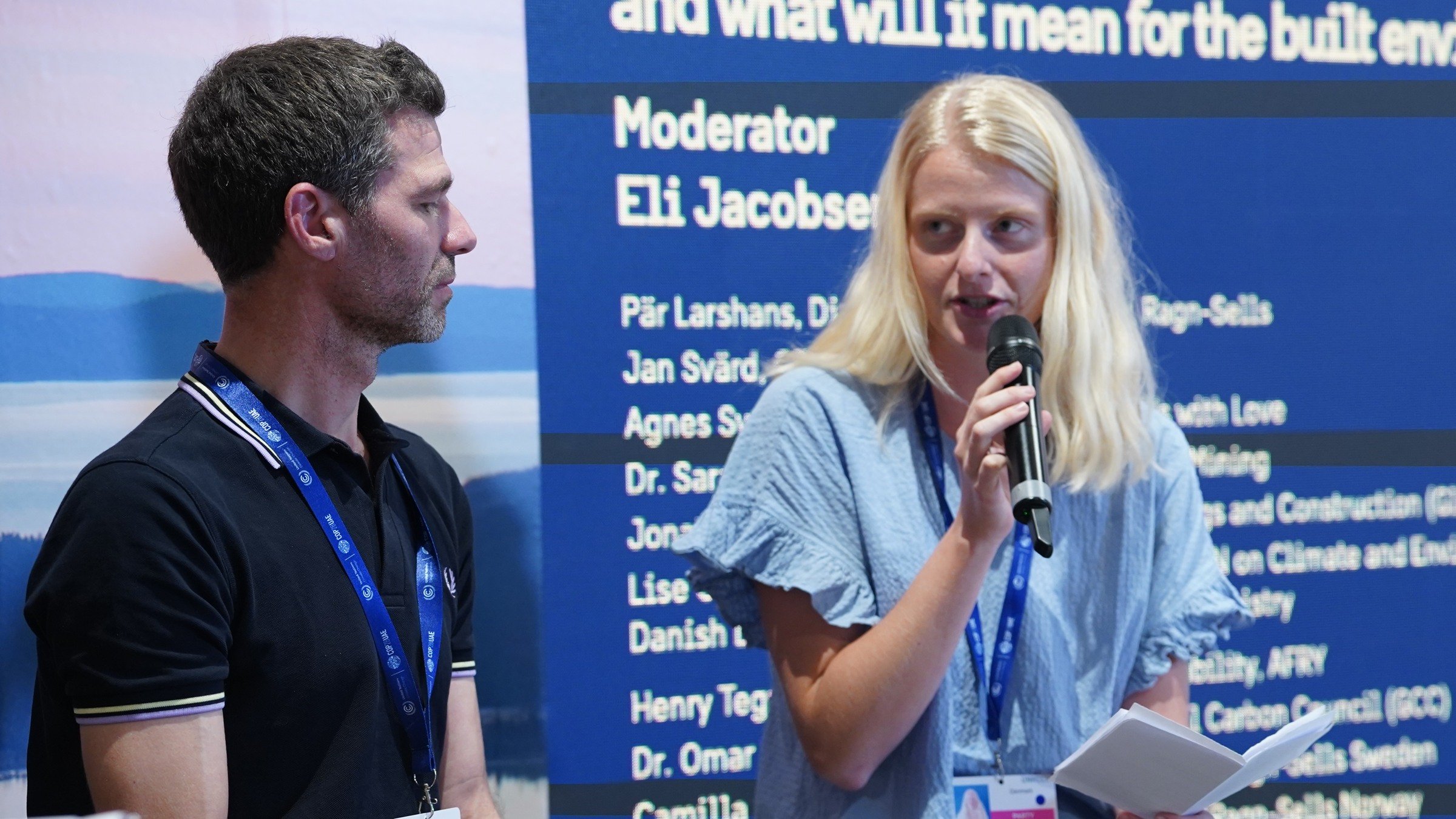
Feeding (and building) the megacities of the future
A recent climate change seminar on the upcoming challenges of a larger global population living mostly in vast cities highlighted how wasted-based circular solutions to lower the carbon footprint of food production could also contribute to greener construction.
26 Mar 2024The world’s population is set to hit 10 billion by 2050, with 70% predicted to live in large urban centres. This new reality was the focus of “Feeding a megacity within the Planetary boundaries and what will it mean for the built environment”, a seminar at COP28 in Dubai, the United Nations’ 2023 conference on climate change. Held on December 10 at the Swedish Pavilion the discussion addressed the crucial next steps to adapt global food systems and construction practices for that future to be sustainable.
Speaking as part of the seminar panel, Dr. Omar Daraghmeh, a Senior Advisor at the Global Carbon Council, stressed that simply scaling up existing agricultural operations won’t be feasible.
– The growing population means expanding the land [used for growing] in agriculture, which is definitely accompanied by the increase in greenhouse gas emissions, said Dr. Daraghmeh. Our role [at the Global Carbon Council] is enhancing and promoting innovative projects that will, at the same time, increase the production of food and lower greenhouse gas emissions.

Dr. Omar Daraghmeh, Senior Advisor at the Global Carbon Council
According to Dr. Daraghmeh, establishing circular alternatives to current linear methods for collecting nutrients essential to farming, like the phosphorus used in fertilisers, would lead to meaningful reductions of emissions from agriculture.
One example of such an alternative is the Ash2Phos process, developed by Ragn-Sells subsidiary EasyMining, which recovers high-quality phosphorus from incinerated sewage sludge. However, Ash2Phos extracts other resources like iron, aluminium, and silica sand. And those recycled materials have applications outside of food production.
Turning wastewater into building materials
While agriculture is a major contributor to climate change, so is the construction industry. It currently represents around one-third of global emissions.
As seminar panellist Jonathan Duwyn – who was representing both the Global Alliance for Buildings and Construction, as well as the United Nations Environment Programme – explained, decreasing the industry’s climate impact requires circular solutions across the construction value chain, especially in terms of building materials.
– Cement, concrete, and steel alone are 23% of our emissions, so it's really urgent to work on these three materials to decrease their carbon. But at the same time, we actually need to introduce other materials. There is a lot of opportunity to work on bio-based [and hybrid] materials, said Duwyn.
And technology like Ash2Phos can provide the resources for those new building supplies. Ragn-Sells showcased several practical applications for the silica sand recovered from wastewater at the seminar. It can be used as a substitute for cement in concrete, as well as paint, tiles, and even acoustic soundproofing material. All the product concepts were developed through a partnership between EasyMining and the design firm Form Us With Love and have a documented lower carbon footprint than current options.
But building the megacities of the future in a sustainable way will need more than just circularly sourced materials. It also requires a totally new approach to looking at residential spaces.
New value chains to match new values
A key point of the seminar was how discussions about climate-responsible construction have evolved from reducing day-to-day emissions to creating sustainability throughout a building's entire life cycle, from sourcing the materials to designing for demolition. Yet, incorporating those approaches for the future will require new investments in urban planning, updated policies and building codes, and fresh perspectives on housing.

Jonathan Duwyn and Lise Coermann-Nygaard.
Lise Coermann Nygaard, Danish UN Delegate on Climate and Environment with the Nordics team, was another panellist at the seminar and was attending COP28 to represent Danish youth. She underscored how young people’s commitment to the environment guides them as consumers, including their views on the spaces where they live.
– There are a lot of young people who are willing to live in smaller buildings and smaller residences. And if we are to house all the people in the future, I think we really need to look into how we can be housed in a different way than what we are today, said Lise.